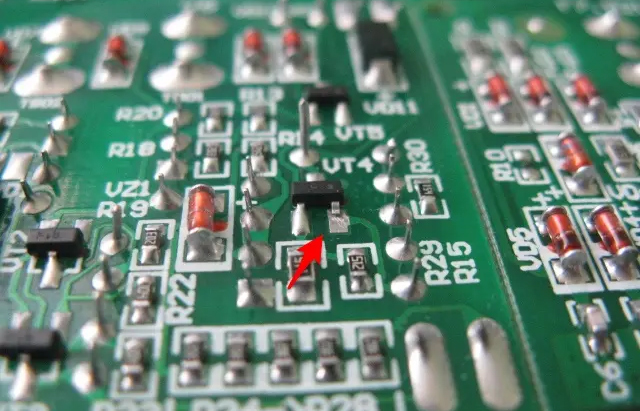What are the causes of false welding?

Cold solder joint is a common soldering defect in PCB assembly process, which often leads to poor functioning or failure of the circuit board. The occurrence of cold solder joint may affect the reliability and stability of the circuit board, so it is important to understand the causes and prevention methods of cold solder joint. Cold solder joint in PCB assembly is caused by incomplete wetting of the solder to the pad or lead during the soldering process, resulting in the presence of air gaps in the solder joint. The production of cold solder joint may be caused by various factors, which will be introduced one by one below.
Firstly, soldering temperature may be one of the causes of cold solder joint. Both too low and too high soldering temperature may cause cold solder joint. If the soldering temperature is too low, the solder may not fully wet the pad or lead surface, resulting in cold solder joint. On the other hand, if the soldering temperature is too high, the solder may evaporate or burn, resulting in cold solder joint. Secondly, soldering time is also one of the factors that may cause cold solder joint. If the soldering time is too short, the solder may not fully wet the pad or lead surface, resulting in cold solder joint. On the other hand, if the soldering time is too long, the solder may flow excessively or oxidize, resulting in cold solder joint.
In addition to soldering temperature and time, soldering pressure may also be one of the factors that cause cold solder joint. If the soldering pressure is insufficient, the solder may not fully wet the pad or lead surface, resulting in cold solder joint. On the other hand, if the soldering pressure is too high, the solder may be squeezed out of the solder joint, resulting in cold solder joint. Moreover, the selection and quality of soldering materials may also affect the occurrence of cold solder joint. If the composition of the soldering material is inappropriate or of poor quality, the solder may not fully wet the pad or lead surface, resulting in cold solder joint.
Finally, oxidation and contamination on the surface of PCB may also cause cold solder joint. If there is oxidation or contamination on the surface of PCB, the solder may not fully wet the pad or lead surface, resulting in cold solder joint. To prevent the occurrence of cold solder joint, some measures can be taken. Firstly, it is necessary to ensure the suitability of soldering parameters such as temperature, time and pressure. Secondly, it is necessary to choose high-quality soldering materials and ensure their appropriate composition. In addition, attention should be paid to the cleaning and treatment of the surface of PCB to avoid the influence of oxidation and contamination.
In summary, cold solder joint is a common defect in electronic soldering, which may affect the reliability and stability of the circuit board. Understanding the causes and prevention methods of cold solder joint can help us better solve problems in electronic soldering, and improve the quality and reliability of circuit boards.

